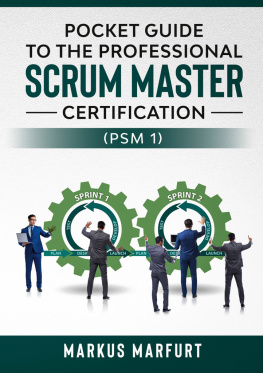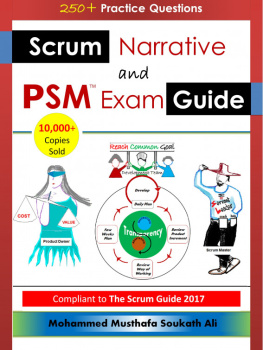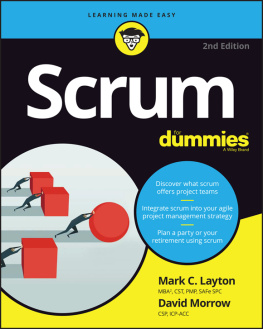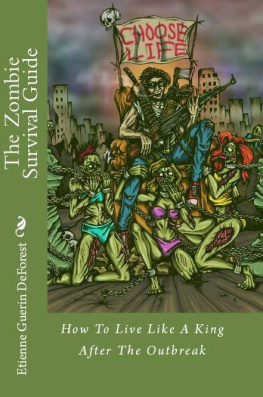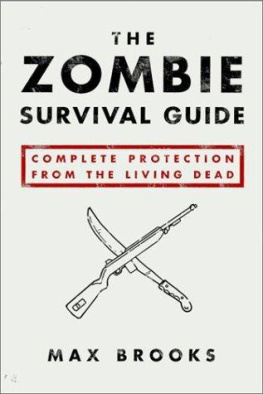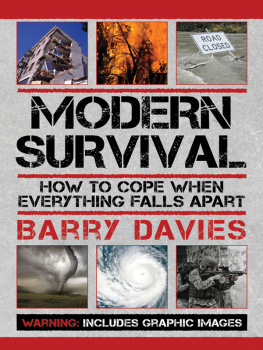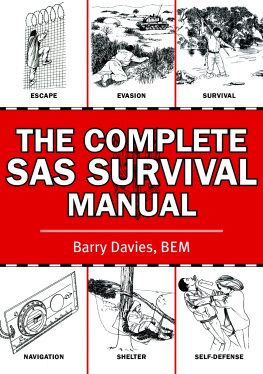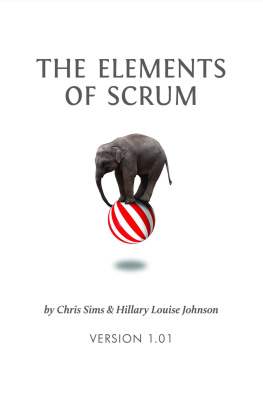Barry Overeem - Zombie Scrum Survival Guide
Here you can read online Barry Overeem - Zombie Scrum Survival Guide full text of the book (entire story) in english for free. Download pdf and epub, get meaning, cover and reviews about this ebook. year: 2020, publisher: Addison-Wesley Professional, genre: Home and family. Description of the work, (preface) as well as reviews are available. Best literature library LitArk.com created for fans of good reading and offers a wide selection of genres:
Romance novel
Science fiction
Adventure
Detective
Science
History
Home and family
Prose
Art
Politics
Computer
Non-fiction
Religion
Business
Children
Humor
Choose a favorite category and find really read worthwhile books. Enjoy immersion in the world of imagination, feel the emotions of the characters or learn something new for yourself, make an fascinating discovery.

- Book:Zombie Scrum Survival Guide
- Author:
- Publisher:Addison-Wesley Professional
- Genre:
- Year:2020
- Rating:5 / 5
- Favourites:Add to favourites
- Your mark:
- 100
- 1
- 2
- 3
- 4
- 5
Zombie Scrum Survival Guide: summary, description and annotation
We offer to read an annotation, description, summary or preface (depends on what the author of the book "Zombie Scrum Survival Guide" wrote himself). If you haven't found the necessary information about the book — write in the comments, we will try to find it.
Zombie Scrum Survival Guide — read online for free the complete book (whole text) full work
Below is the text of the book, divided by pages. System saving the place of the last page read, allows you to conveniently read the book "Zombie Scrum Survival Guide" online for free, without having to search again every time where you left off. Put a bookmark, and you can go to the page where you finished reading at any time.
Font size:
Interval:
Bookmark:
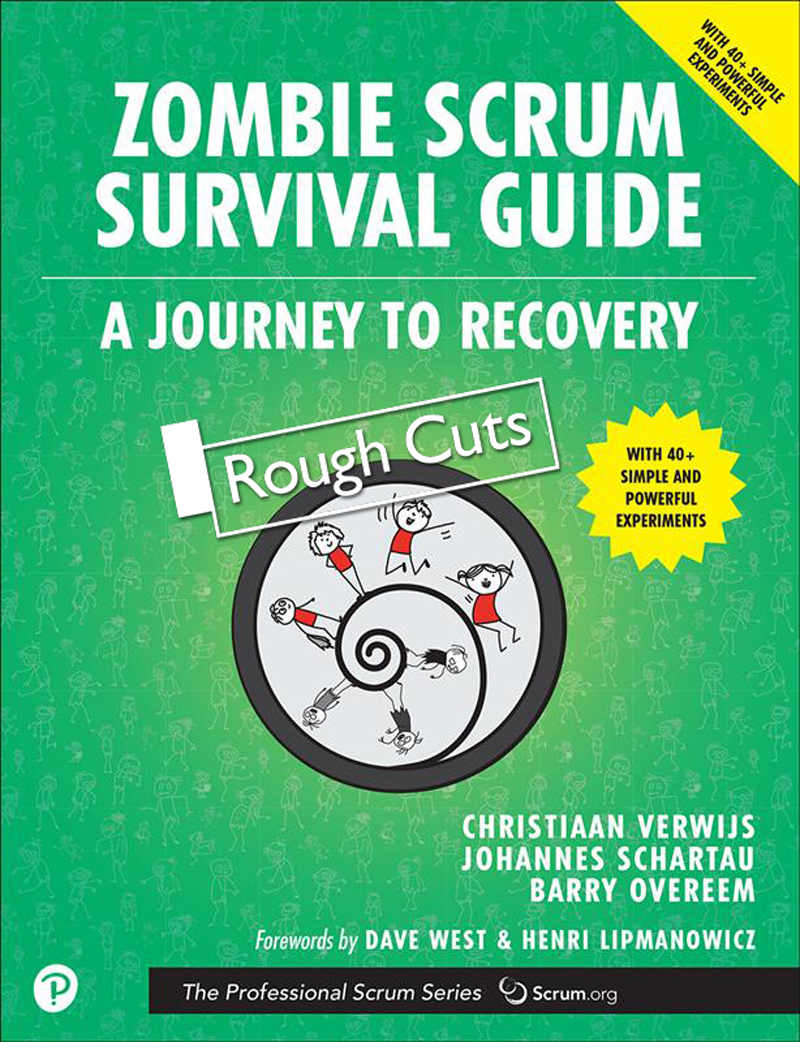
Johannes Schartau
Christiaan Verwijs
Barry Overeem

Scrum is cited by analysts and the press as the most widely used agile framework, with potentially millions of people applying it every day. To prove its impact, just wear a t-shirt with Scrum written on it and walk through an airport. People will stop you and ask you questions about Scrum and if you can help them do x or y. But there are many people using Scrum and not getting the most out of it. They are, as Christiaan, Johannes, and Barry describe, acting like zombies, mindlessly using the Scrum artifacts, events, and roles but not really getting the benefits from it.
But there is hope! The Zombie Scrum infection can be cured, with focus and perseverance. Christiaan, Johannes, and Barry have written this excellent survival guide to help teams and organizations improve their use of Scrum to achieve better results. It is a perfect complement to the other titles in the Professional Scrum Series, all of which focus on helping to improve the ability of Scrum Teams to deliver value in a complex and sometimes chaotic world.
Professional Scrum, the antithesis of Zombie Scrum, consists of two elements. First is Scrum, which is of course the framework as described in the Scrum Guide, but also the foundations that framework is based upon. Those foundations are empirical process; empowered, self-managed teams; and a focus on continuous improvement. Surrounding the framework and its ideas are four additional elements:
Discipline. To be effective with Scrum requires discipline. You have to deliver to gain learning; you have to do the mechanics of Scrum; you have to challenge your preconceived ideas about your skills, role, and understanding of the problem; and you have to work in a transparent and structured way. Discipline is hard and may at times seem unfair as your work exposes problem after problem and your efforts seem in vain.
Behaviors. The Scrum values were introduced to the Scrum Guide in 2016 in response to the need for a supporting culture for Scrum to be successful. The Scrum values describe five simple ideas that when practiced encourage an agile culture. Courage, focus, commitment, respect, and openness describe behaviors that both Scrum Teams and the organizations they work within should exhibit.
Value. Scrum Teams work on problems that deliver value to stakeholders when they are solved. Teams work for a customer who rewards them for that work. But the relationship is complex because the problems are complex; the customer might not know what they want, or the economics of the solution might also be unclear, or the quality and safety of the solution may also be unknown. The job of a Professional Scrum Team is, to the best of their ability, to do the right thing for all these parties by delivering a solution that best meets their customers needs within the constraints that have been placed on them. That requires transparency, respect for each other and for customers, and a healthy curiosity to uncover the truth.
Active Community Membership. Scrum is a team sport where the team is small. That means that the team is often the underdog trying to solve problems that it barely has the skills and experience to solve. To be effective Professional Scrum Teams must work with other members of their community to learn new skills and share experiences. Helping to scale the agility of the community is not completely altruistic, because the helper often learns valuable things that they can bring back to help their own team. Professional Scrum encourages people to form professional networks in which ideas and experiences that help teams can be exchanged.
Professional Scrum and Zombie Scrum are two mortal enemies in eternal locked combat. If you relax your guard for a moment, Zombie Scrum comes back. In this book Christiaan, Johannes, and Barry describe a guide for how to stay on your guard, providing practical tips for both identifying when you have become a zombie and how to stop this happening. Their humorous and very visual material is a must-have for any Zombie Scrum hunter.
Good luck in fighting Zombie Scrum!
Dave West
CEO, Scrum.org
Scrum is an excellent framework, buttheres always a but, isnt there?!its users and practitioners are, like everyone, imperfect, diverse, and unpredictable. They will show up as they are, quiet or talkative, hesitant or interrupting, reckless or cautious, linear or creative, bossy or timid. And all, Scrum Masters included, bring reflexive habits of what they do routinely while working in a group. In other words, all the people ingredients that can make ordinary meetings dysfunctional are present in Scrum Events. This is why Scrum practitioners must be prepared to fortify the framework with suitable techniques to ensure that every event delivers its full potential, regardless of the personalities in the room. In short, every Scrum Event must be facilitated well enough to be productive, engaging, rewarding, and enjoyable.
Liberating Structures are ideal fortifiers of Scrum because they perfectly complement it. First, they are easy to use, flexible, efficient, and effective. Second and most important, Liberating Structures ensure that every participant is actively engaged and contributes. This makes the Scrum Events both productive and rewarding for all.
As Scrum Teams learn how to use a few Liberating Structures, they acquire tools that are universally and routinely useful in all manner of situations at work or outside work. For example, a simple 1-2-4-All or Impromptu Networking can engage groups in deeper thinking during a Sprint Review, Sprint Planning, or Sprint Retrospective. Min Specs or Ecocycle Planning can help Product Owners work with stakeholders to order the Product Backlog. And structures like Conversation Cafe, Troika Consulting, and Wise Crowds can be used to navigate complex challenges and concerns and build trust. Throughout this book, youll notice many examples of how Scrum Teams can use Liberating Structures to overcome Zombie Scrum.
Barry, Christiaan, and Johannes have done a magnificent job of accumulating successful experiences and sharing their inspiring stories in this very practical book. They dont shy away from telling it like it is, which is why their proposals are always useful, as they are grounded in reality.
Henri Lipmanowicz
Cofounder, Liberating Structures
Theres us and the dead.
We survive this by pulling together, not apart.
Rick Grimes, AMCs The Walking Dead
In This Chapter
Start recognizing that something may be off with how Scrum is used in your team.
Explore the purpose of this book.
Discover for whom this book is perfectly suited.
Congratulations on joining the Zombie Scrum Resistance! Your membership comes with all kinds of perks and benefits. In your hands, you are holding the Zombie Scrum Survival Guide. All new members get one. This guide contains our collective experiences. It will equip you with everything needed in your ongoing struggle against Zombie Scrum.
You may have picked up this book because something feels off with how your team or organization is working with Scrum. Or you casually walked into the office this morning and noticed a number of zombies staring at you (). Whatever the case, we expect you to be reading this guide while trapped in a challenging situation. Maybe you are hiding out in the broom closet, beneath a pile of Sprint Goal templates, or behind a flip chart with the results of last months Retrospective. Although no one will find you there for a while, we still know that time is of the essence for you. So let us not mince words and get right into it.
Font size:
Interval:
Bookmark:
Similar books «Zombie Scrum Survival Guide»
Look at similar books to Zombie Scrum Survival Guide. We have selected literature similar in name and meaning in the hope of providing readers with more options to find new, interesting, not yet read works.
Discussion, reviews of the book Zombie Scrum Survival Guide and just readers' own opinions. Leave your comments, write what you think about the work, its meaning or the main characters. Specify what exactly you liked and what you didn't like, and why you think so.

